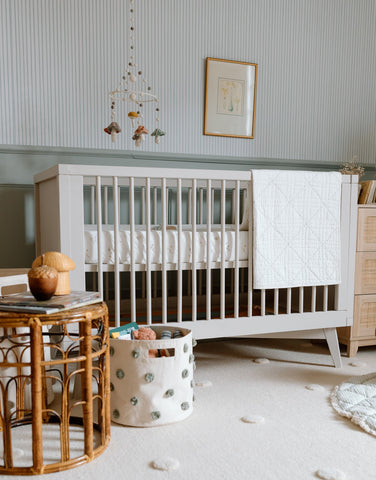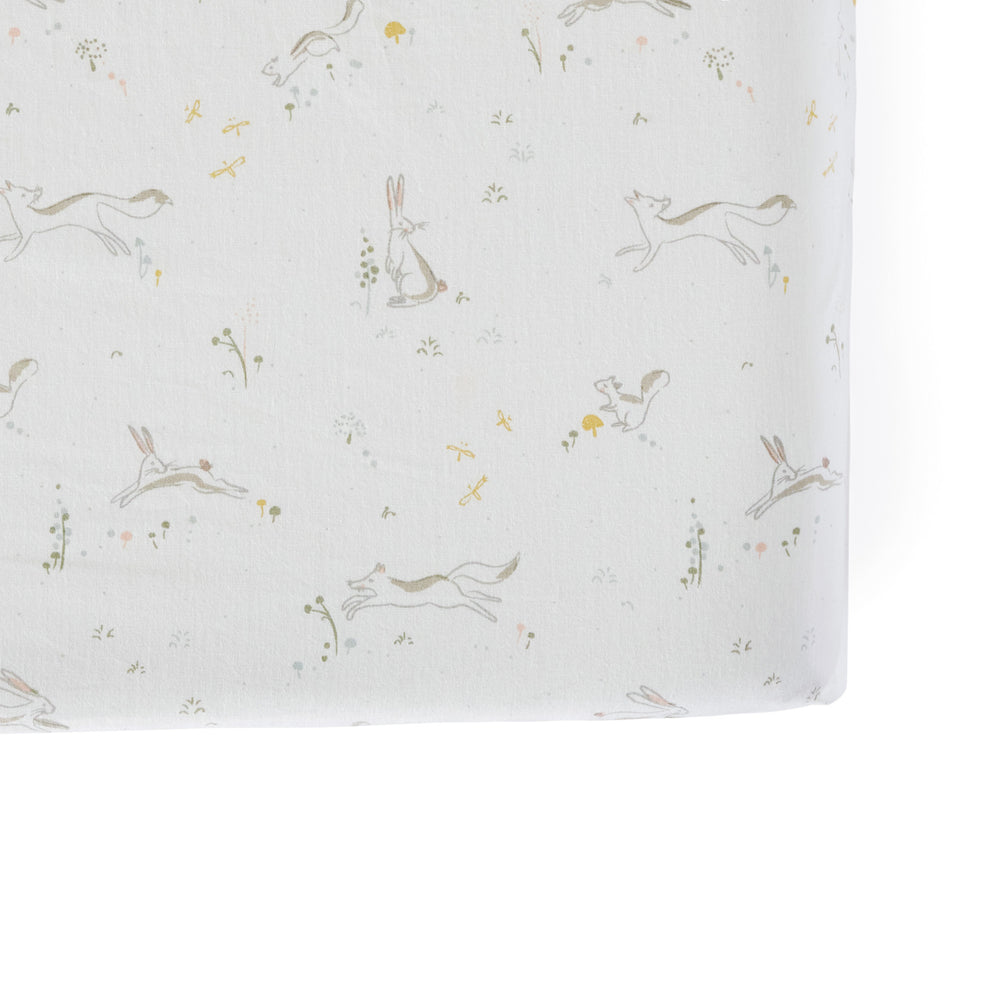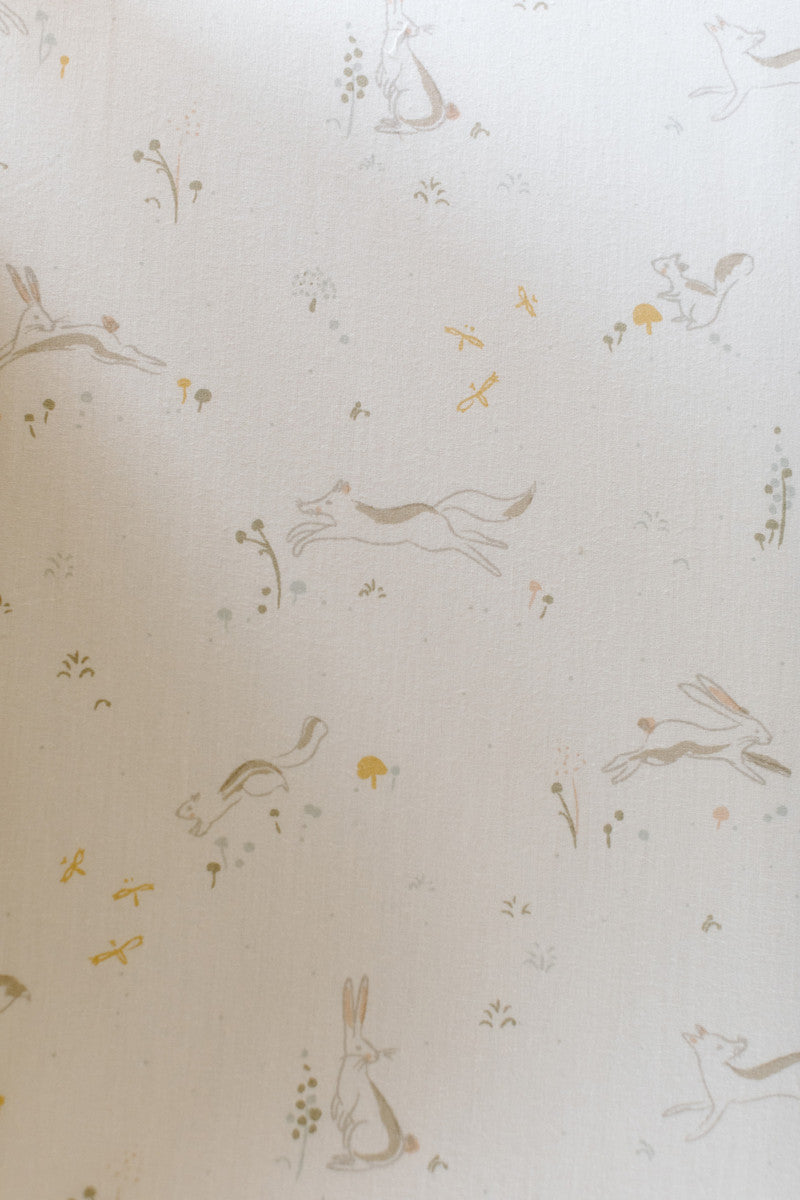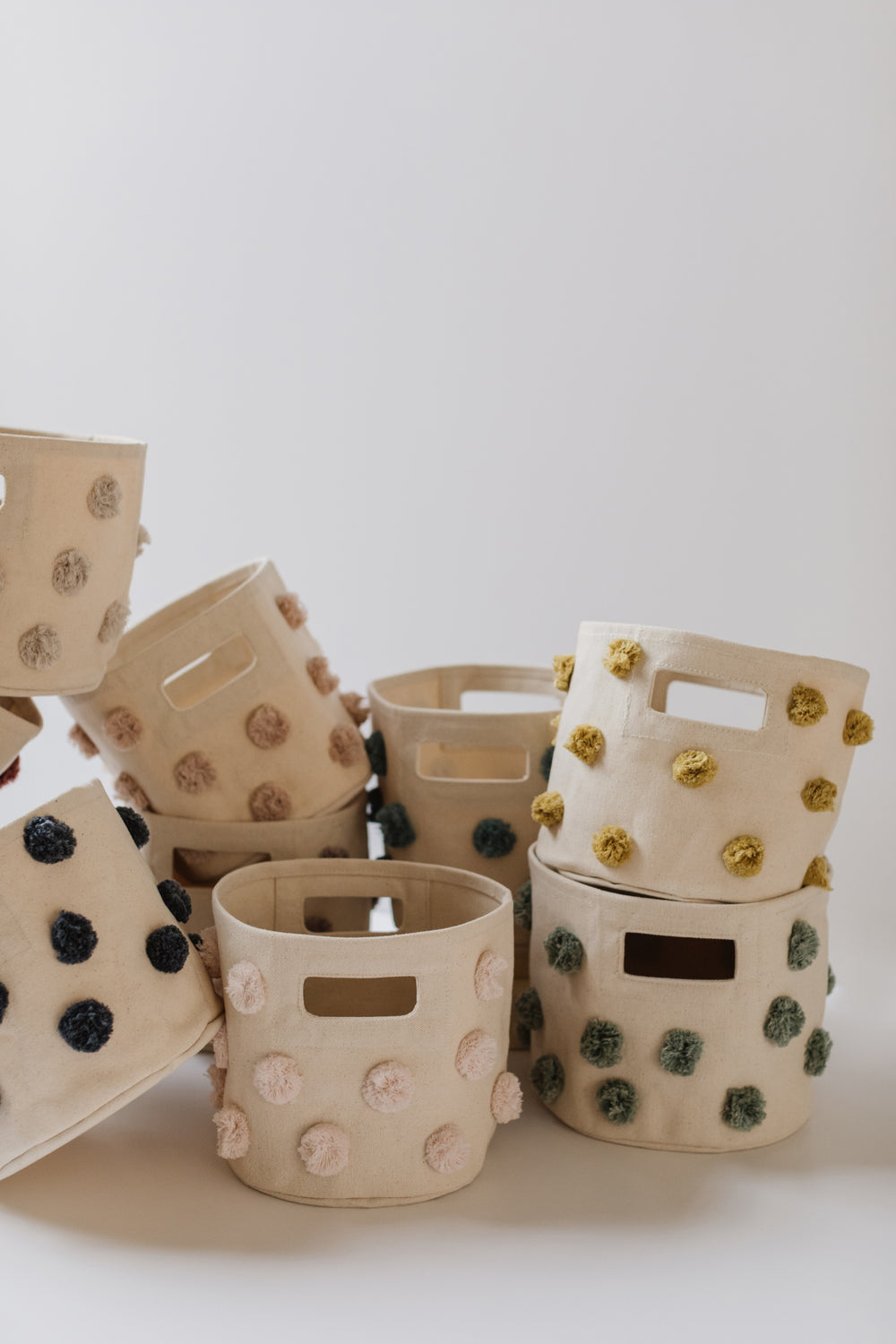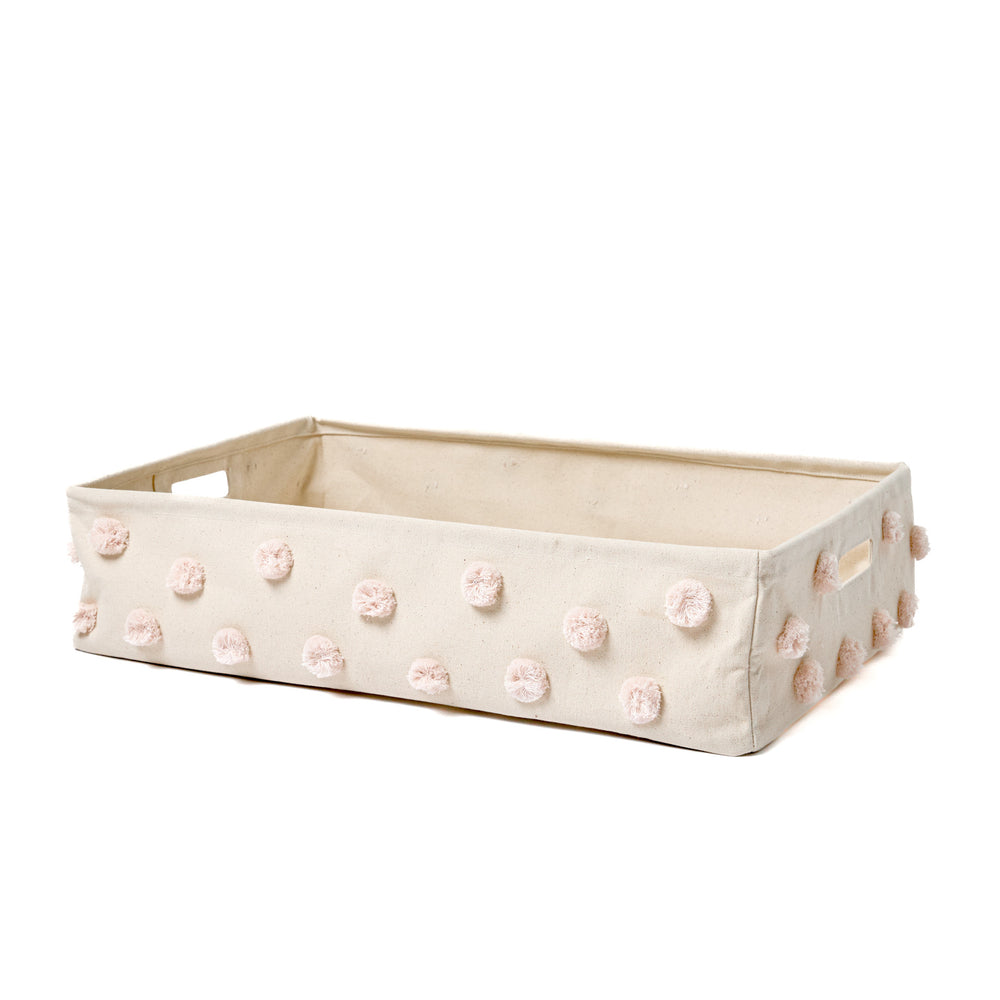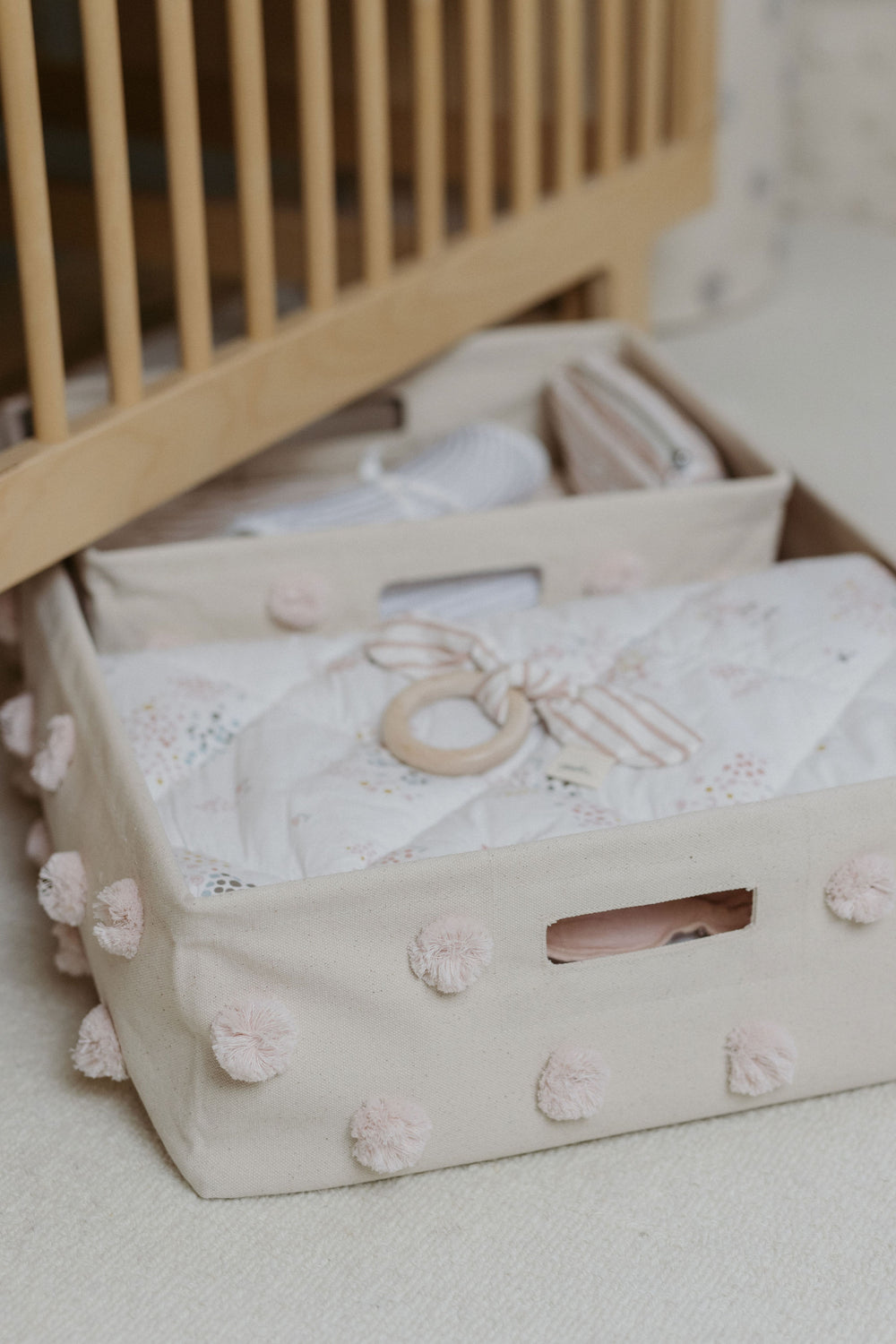Nursery Design: 10 Tips For Small Baby Rooms
Whether you live in an apartment or a house with modest square footage, designing a beautiful nursery for a small space takes a dash of creativity. Get inspired to set up a dreamy space while meeting all the practical needs of your little one with our guide to nursery design! Follow these top 10 space saving nursery tips to make the most of small baby rooms.
10 Tips For Designing Small Baby Rooms
You may be wondering how to maximize space in the nursery if your little one’s room is on the smaller side. With help from our detailed guide, you can design a beautiful and functional room for your little one!
Read on for our top 10 space saving nursery tips:
- Create the illusion of space with the right palette. Painting the walls a neutral color or choosing soft pastel shades like blush pink, yellow or eggshell white helps reflect light to make the room appear bigger. Add design accents like a feature wall with wallpaper, wall decals or try painting the ceiling an accent color to draw the eye upward.
- Make it all open concept. Removing the door to the closet is a great way to add an open-concept style to small baby rooms (and it will help you keep closet storage organized since you can’t hide the mess behind a closed door). Placing large mirrors strategically can also make a room feel bigger and more open.
- Add the right lighting. Welcome in as much natural light as you can. Floor and table lamps can quickly add clutter to small baby rooms - opt for wall-mounted sconces, ceiling light fixtures and plug-in night lights. Since nursery design is mainly about creating a safe, restful space for your little one, choose dimmable lights if possible to help transition to sleep.
- Make the most of the closet. Add a second rail to double the space where you hang your little’s clothing. Stagger the rails, add built-in shelving and cubbies or leave an area for pom pom storage to sort clothing and accessories. Choose a variety of sizes in colors and patterns that complement one another so they’re on display as part of your nursery design. Choose larger pom pom hampers for laundry or big items, minis that tuck into cubbies, and pints and bins to sit snugly on shelving.
- Choose multi-purpose furniture. When you’re looking for space saving nursery tips, start with being selective about furniture. Try a slim rocking chair instead of a large glider. Choose furniture that has more than one purpose like a crib with built-in drawers underneath. A dresser becomes a changing station with a portable changing pad topper or you can use a changing tray that sits across the top of the crib.
- Try a smaller crib. The truth is a lot of cribs are big and bulky - and unnecessary! Your little one will have the same sleep in a bassinet or mini crib. There are a lot of options for cribs that suit small baby rooms and that your little one can continue to use until they need to transition to a toddler bed.
- Be smart about storage. Just when you think you can’t find any more usable space, there might be a wall that can become a built-in bookshelf or a dresser with enough space beneath for hideaway storage. An ottoman can be a secret space to tuck away blankets and crib sheets. A trio of mini pouches look sweet together in prints like magical forest or celestial while a large pouch can keep your nursery must-haves neat and tidy.
- Use shelving strategies. Floating shelves can be placed on walls to display stuffed animals, books and changing table essentials. Adding a hanging rod beneath a floating shelf creates another spot to hang clothing. A Montessori bookshelf displays books without taking up any floor space (your little one will love seeing all the covers before choosing bedtime reading). Add thin ledge shelves or floor-to-ceiling shelving units.
- Don’t ignore door space. Whether you add an over-the-door hanger to keep jackets and clothing sorted or you install storage across the entire door, don’t ignore all the usable space a door can offer. Add bins and hooks to hang items from on the back of the door and customize this wall space to keep toiletries and accessories easy to find.
-
Amplify the space with decor. Add a handcrafted wool rug, adorable mobile or a focal point like a prominent ceiling-mounted light fixture. Swaddles and play mats add a sweet, dreamy feel to nursery design. Instead of going big on a theme, choose a color palette and decor options that are functional and simple enough to grow alongside your little one. Get inspired by these nursery ideas!
Takeaways
Even with a smaller footprint to work with, you don’t have to compromise on the nursery design of your dreams. Focus on key furniture, small scale decor and thoughtful storage solutions to create a layout that’s both beautiful and functional. Babyproofing the space from birth will ensure it's safe enough to function as a Montessori room for your little one to explore freely. We hope these space saving nursery tips have you excited to start organizing your little’s room!
Frequently Asked Questions
Many parents choose to transform a closet into a small baby room. With a walk-in or a larger closet, select only the most essential furniture (like a mini crib with storage underneath) to optimize space. A concern with closet-nurseries is ventilation and insulation. Since they’re usually not insulated as well as other rooms, you have to consider air flow and temperature fluctuations.
Choose thematic decor (in the style of contemporary, vintage, boho or rustic, to name a few) and add your own personal style. Keep the nursery design in harmony with the rest of your house and select a color scheme that is baby appropriate along with soft, natural materials and a functional layout to tackle play, sleep and diapering.
Setting up a nursery can cost anywhere from $500 to $5000 depending on whether you buy new or second hand, stick to only the basics or go all out on designing the baby room of your dreams. Most families spend around $2000 on everything they need for the nursery.
A Montessori baby room encourages your little one to move without restriction within a safe environment (this requires babyproofing from birth). It’s a room where babies can touch, move and explore freely while immersed in play.



